Scholars believe that people on the Japanese archipelago first discovered iron in the mid Yayoi period (300 BCE–300 CE). Domestic production of primitive iron tools began shortly after.
Progress of Tatara Ironmaking
Land of Izumo Chronicle: The Spread of Iron-Producing Towns
-
In the In the Izumo fudoki(Land of Izumo chronicle), there are mentions of “iron in the Hata River” and “hard iron suited to making many things.” These passages suggest that iron production had already begun by the time of the book’s completion in 733.
According to a government record from the Heian period (794–1185), the lands of Izumo, Hōki, Bingo, and Bitchū were allowed to pay taxes in iron instead of rice. This is more proof that iron has been produced in these regions since long ago.
-
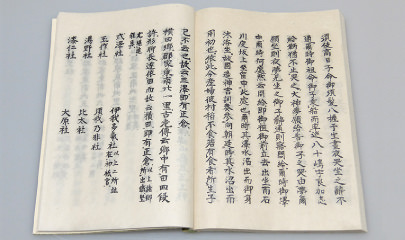
Copy of the 733 Land of Izumo chronicle (Izumo fudoki) (Wakou Museum)
Modern Tatara: The Formation of Sannai Village around the Takadono
The takadono is a building that houses the furnace and other ironmaking equipment.
The expansion of iron production facilities led to the creation of Sannai Village, a place for the workers to live and take advantage of a more consistent production schedule.
-
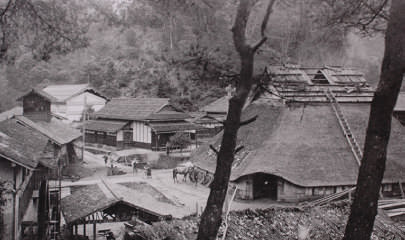
Itohara Family Takadono and Sannai in the Meiji era (1868–1912) -
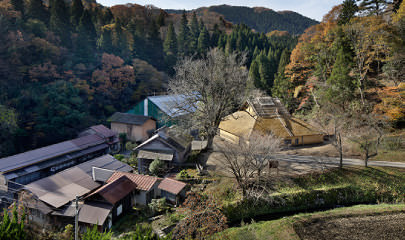
Present-day Sugaya Tatara Sannai (Tanabe Family)
The takadono is supported by four pillars, each up to 18 meters (60 feet) tall, called oshitate-bashira. Inside, charcoal and iron sand are heaped in piles and seats for the various workers are placed on both sides. In the middle of the room is the furnace with bellows on either side. The bellows send air through 20 bamboo tubes connected to the furnace. The underground structure is directly below the furnace and bellows.
Sugaya Tatara in Yoshida, Unnan is the last of its kind, and its characteristics can be further studied by looking at replicas at various museums.
-
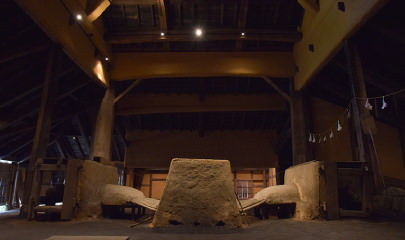
Inside Sugaya Tatara takadono -
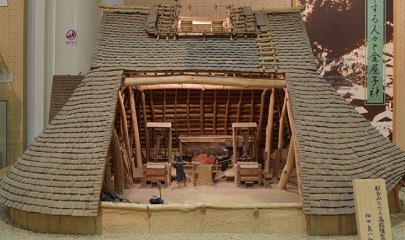
Mt. Tsugō Tatara takadono replica (Wakou Museum)
-
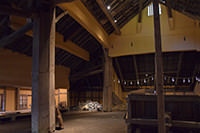
Oshitate-bashira -
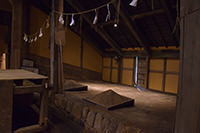
Iron sand piles -
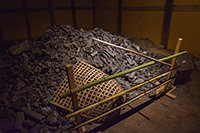
Charcoal pile -

Seats
Meiji Era (1869–1912) to Shōwa Era (1926–1989): Brick Furnace Smelting
The introduction of Western iron manufacturing processes began in 1857, with the Ōhashi blast furnace in Kamaishi, Iwate Prefecture, and by 1894, iron production by Western methods overtook that of tatara. At this time, tatara workers and blacksmiths were utilizing automation and switching to brick furnaces.
A brick furnace is a tall furnace built with heat-resistant bricks that uses iron sand (or waste iron ) and charcoal to make iron. They were essentially Western-style furnaces with tatara ironmaking techniques applied to them.
Although traditional tatara ironmaking ended in the Taishō era (1912–1926), production of charcoal pig iron used in brick furnaces continued until 1965.
At the Tatara Brick Furnace Cultural Heritage Museum in Okuizumo, you can see a reconstruction of the Makihara Ironworks Brick Furnace that was built in 1935.
Changes and Propagation of Tatara Structure: Regional Diversity
The underground structures of tatara differed depending on region and time period.
The ditches that were dug alongside “field tatara” of the 1100s to 1500s evolved into the kobune of the modern takadono tatara, and stone-laying patterns and moisture removal drains evolved into the tokotsuri.
You can see and compare such technological changes at the Onji Iron Making Ruins in Okuizumo, where a field tatara and takadono tatara were built side by side.




